Ijraset Journal For Research in Applied Science and Engineering Technology
- Home / Ijraset
- On This Page
- Abstract
- Introduction
- Conclusion
- References
- Copyright
IoT Integrated Smart Parking Zone and Website with Stand-alone System and Wireless Technology
Authors: Md. Tanjil Islam Khan, Md. Shahriar Hussain
DOI Link: https://doi.org/10.22214/ijraset.2024.64124
Certificate: View Certificate
Abstract
The research project works to digitalize the full parking management system, transform the manual parking methods, solve traffic and road congestion problem and show live updates of the designated parking slots. It is ecofriendly and eliminates human interaction. It also offers personal and corporate business earnings. In the project, anyone can book time slots for parking following their convenient schedule, pay bills via the online payment system, control the entrance while entering and exit gate in the parking area with the vehicle using the website system. Users do not have to use any extra identity instrument, like- RFID Cards, QR Codes etc. The system will verify them by online credentials. Moreover, people can see the live slot updates for better security. The project collaborated with 3 major technology parts which are practical hardware, software and database system. NodeMCU, Ultrasonic Sensors, Servo motors, and other technical components are used in the hardware part. PHP, HTML, JavaScript, CSS etc. codes are implemented for the website development. Firebase Realtime Database and MySQL are integrated for the cloud and local database management with the hardware and software parts for building the IoT technology environment and infrastructure.
Introduction
I. INTRODUCTION
In the modern era, the number of motor vehicles are rising continuously. In general, every single person or family wants to have a personal motor vehicle. But the space of keeping them is not increasing. That is why, many types of road congestion is created and traffic jam is just one of them. Vehicle security is also compromised due to these issues. So, a optimal solution is needed for this problem and organized parking can help to solve it. Thus, the smart parking zone idea has been come and implemented. Here, both software and hardware part will be connected and they will transfer data between them through online real-time database system.
The main purpose of this project is to solve the parking issues and implement an automatic controlled parking zone which can give service to people by taking payments and remove the hassle to find parking slots manually. The goal is to digitalize the parking zones with full online system and lessen human interaction. It will surely save valuable time of people with a better parking service experience. In this project, people can reserve a parking space, complete the payment process, and effortlessly access the parking gate to open when needed. They can give instructions to control the gate without the need for any physical device, just by giving command on the website. This initiative seamlessly integrates software, hardware, and database technologies in line with the principles of the Internet of Things.
Chapter 1 is written with the introduction part. Research Literature Review part is in chapter 2 and methodology part is in chapter 3. Results and discussion are in chapter 4. Chapter 5 shows Impacts of the Project and chapter 6 shows the Project Planning. Complex Engineering Problems and Activities are stated in chapter 7. The conclusion part is written in chapter 8.
References are added in the last part of the report.
II. RESEARCH LITERATURE REVIEW
A. Existing Research and Limitations
Many research papers have been studied for the ideation of the project. The below paper are the most relevant.
In paper [1], Mr. Amara Aditya and other authors have built a prototype system of smart parking system. Mainly, they are offering a descent architecture for the parking spaces through technology. They proposed an intelligent framework to find the parking slots efficiently. The system keeps track of the real time available parking slots and spaces. It can also show the route heading to the parking space to the user after the reservation. This system is proposed for both big parking spaces and empty home parking slots.
They built mobile app for user interaction, firebase for database and hardware part for real time demonstration. In the hardware part, they have used Raspberry Pi for computing, RFID card for user check and scan, NodeMCU for database connection and transfer and IR sensor for detection. By RFID card, the number of the vehicle is read and the slot status is read by the IR sensor. MFRC522 module is used for this system. The authors were successful in their implementation and they are wishing to have warning alarm for incorrect parking in the future improvements.
In paper [2], Mr. Renato Stopic and other authors showed a new method for measuring parking occupancy through satellite image data which can give service by lower cost than other inspection methods. They used high-resolution satellite image with 0.5 meter resolution under specific weather condition. The accuracy of the colors (blue, green and red) was also good and they got 0.82 FI score. They used Pleiades 1A satellite for image collection, The Municipality of Alkmaar for geospatial dataset collection and other data from ground observation car’s dashboard cameras and GPS. They followed Range zonal statistics and used non-parametric, the triangle threshholding method algorithm to avoid biased thresholds. The Python language was used implement the threshold algorithm and each parking spot were found with QGIS using zonal statistics method. They implemented their system successfully but there are some drawback of this system which can be- tree canopy, non-favorable weather condition etc. It is showed that parking spots without tree cover boosts the system accuracy level from 76% to 80%. There are some other sources of satellite image, like- SkySat, SuperView, KompSat, GeoEye, WorldView etc.
In paper [3], Mr. H.D.D. Maduranga and other authors have mainly worked on development of a mobile app based IoT system for smart parking system in Sri Lanka. They designed a remote parking reservation system and developed a mobile app for the users and admins. They tried to solve a problem which is- other parking systems only facilitate the parking slot when the driver arrives at the parking zone. But people can have prior reservation though the author’s developed system and save their valuable time and traffic congestion in the road of Sri Lanka. Android Mobile app is used to have interaction with user and also there is an admin panel for controlling the system. The firebase is used for database purpose. In the hardware part, they used ultrasonic sensors for detection, servo motor for gate opening-closing function and CCTV camera for verify the car’s number plate. Python programing language is used including the OpenCV and YOLO libraries. Their system is tested on 4 parking slots and it is working successfully.
In paper [4], Mr. Amol Pomaji and other authors have mentioned the problem of increasing traffic because of parking issues. So, they built a smart parking management system which will offer parking slots through online mobile app and it can receive reservation and payments through credit card or net banking. Basically, the system tracks the nearest car parking place, offer reservation by green (available) and red (unavailable) signal and receive payment. Also it can refund the payment if any user cancels the reservation. They showed three module in their developed system which are- user module for user usage, administrator module for admin control and booking module for the works of reservation. For the hardware part, they showed ESP8266 for calculation and data transfer, RFID reader to scan the RFID tags, IR sensor for detection and RFID tags for identification. Their android and web application results were successful.
In paper [5], An IoT based smart parking system is shown by Mr. Shivam Kanojiya and other authors. They intend to solve the problem of lack of the car parking facilities. They also stated that their system can replace the human operators with automatic system, save more fuel and ensure vehicle safety. As traffic increases, the need of parking also goes higher. They are offering the automatic system of parking from entrance to the payment full work. This will also save people’s valuable time because they would not have to find the empty parking spots manually. Both user and parking owners can get benefit from this system. In the hardware part, they included NodeMCU for data transfer and calculation, 2 servo motors for entry and exit, 3 IR sensor for parking slot detection, 2 IR sensors for exit and entrance and power bank as a power source. In the software part, they stated Adafruit IO (Online Service) and C language for coding. The authors are hoping to implement Artificial intelligence and Machine Learning in the future improvements.
In paper [6], A smart parking system based on IoT is done Mr. Hardik Tanti and other authors. They proposed system which can remove the problem of insufficient parking spaces and enable people to use various organization’s free parking spaces by payment. The payment will updated with time duration. They are using internet of things and digital software and hardware system for the implementation. There are using IR sensors for detection purpose, NodeMCU for data transfer and mobile app for parking availability check and reservation. The user verification system will be based on QR code. In the mobile software, map technology is also included for the users to find their parking zones according to their locality. User can register in the mobile software, find and book free parking zones, edit profile and make payment.
But there is a limitation in this system which is human interaction. In this proposed system, a security guard will be needed at the gate to scan the QR code for user verification.
In paper [7], Mr. Abdul Ahad and other authors have developed a web app system. It is an online based parking system. The advantages of their system are- safe and secure, more reliability, space management, economical and the most important thing is eco friendliness. The parking app show availability of the parking spaces. People can reserve the parking spaces and they have to show up in 15 minutes grace period to avoid cancellation. They stated about GPS technology which can be used to know about parking information. The smart parking system includes automatic car number detection and printed bill at the exit time with full information. Sensors monitoring system established with a sensor’s camera to observe the occupancy of the parking slots. Actually, the authors are trying to go towards a smart city by developing a smart parking system.
In paper [8], A comparative analysis between NodeMCU and Arduino Uno is provided by Ms. Kamna Singh and other authors. They have done a comparative study on both boards and showed the abilities and differences. They have stated about Internet of Things applications following NodeMCU and Arduino board. NodeMCU, development board and Arduino, microcontroller board both can generate IoT based applications. IoT technology connect and communicates with hardware through internet. There are four main components, which are- sensors for sensing environment, connectivity to establish connection between sensors and web, data usage and user interface for the users. NodeMCU is a open source firmware and Arduino Uno is a 8bit microcontroller. In deep sleep mode, NodeMCU consumes only 0.5 µA and Arduino Uno consumes 35 mA. Arduino Uno ram size is 2KB but NodeMCU has 128KB. Arduino Uno has 32KB rom, 14 digital input-output pins and bigger size. NodeMCU has 4MB rom, 11 or 13 I/O ports and smaller size. Both can work with sensors and process data but NodeMCU can access Wi-Fi with inbuilt hardware module and transfer data in the cloud.
In paper [9], The authors L Anjari and A H S Budi have built a smart parking system prototype by IoT. They tried to solve the parking problem and help the organization of parking lot and space direction. They used Arduino IDE for writing the hardware code and MIT App Inventor for developing an android app for the user interface. Firebase had been used as the database storage and connection. The authors have used NodeMCU for wireless connection, calculation and data transfer, IR sensor for detection, LED for indication, Servo motor as gate and step down VDC for voltage conversion and control. The dimension relative to the parking planning and operation manual depends on the vehicle type and door opening system. In this design, they used perpendicular parking system because it more common. The system was working appropriately with the purpose of their research.
In paper [10], Mr. Joel Charles, Dr. Jyotsna Gawati and other authors have proposed a design using the concept of IoT to reserve a free parking space and developed a portable project model. The main goal is to parking space service to the user with full information. The have added pre reservation and cancellation mode to avoid the unnecessary traffic which will also save the vehicle fuel consumption. They have used RFID reader and RFID tag to authenticate the user, NodeMCU for wireless connection and calculation, servo motor for the gate opening-closing purpose, Firebase for database and 12C module as LCD display to show the information on screen. The authors have used Arduino IDE for writing code. Basically, they will provide RFID cards with unique values inserted. They will also provide different cards for different type of vehicle, like- car, motorcycle etc. If the system validates customer’s RFID card, then a customer can reserve a parking space and make payment according to it. The advantages of their system are- small size, costless, light weight and less complexity while setup. Till this paper, they have made the database and hardware part ready. For future improvements, they want to offer slot booking system and payment system through the website.
III. RESEARCH LITERATURE REVIEW
A. System Design
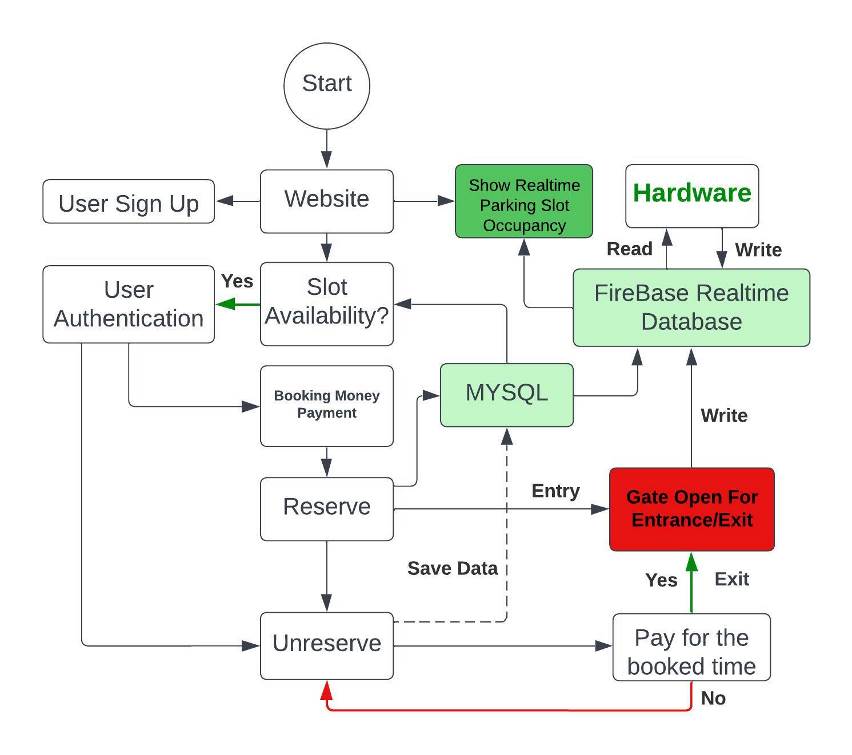
Figure 3.1.1. Flow chart.
In figure 3.1.1, the system works in collaboration with hardware, software, local and cloud databases, and Wi-Fi. The website is directly interacted with by the users. Users have to sign up with their information and credentials. Credentials will be verified by the website system for every unique type of command from the users. There is a payment system for reserving slots with booking money and withdrawing reservations by paying automatically calculated total bill regarding usage time. The physical parking gate in hardware will open once for every entrance and every exit time. Ultrasonic sensors will update the real-time occupancy of parking slots. Here, both MySQL and Firebase Real-time will be collaborated for the booking system.
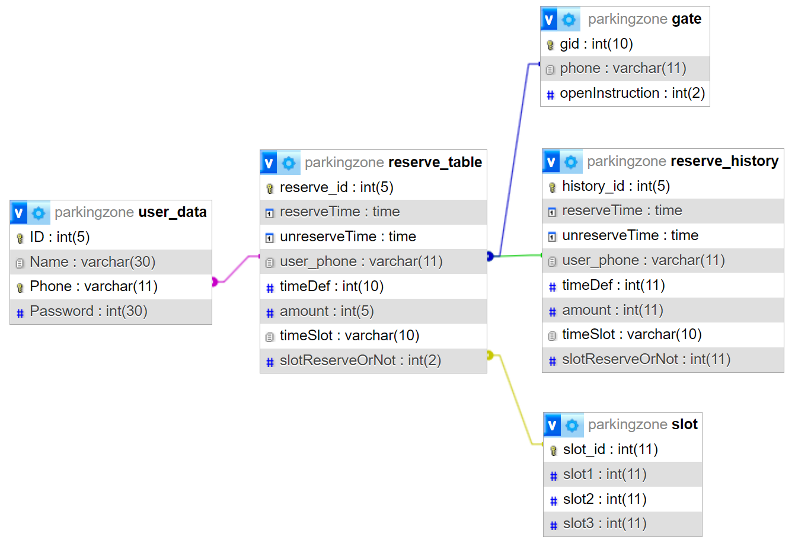
Figure 3.1.2. Database Design.
In figure 3.1.2, this is the design of MySQL local database. There are five tables which are user_data, reserve_table, reserve_historty, gate, and slot. User data table stores information and credentials of the customers. Reserve table works in the full reservation duration and saves the bill calculation related data. Parking slot and gate tables engage with the reserve table to control the data transfer between hardware and software. Reservation history table basically saves all the information of a user after taking a successful parking reservation service.
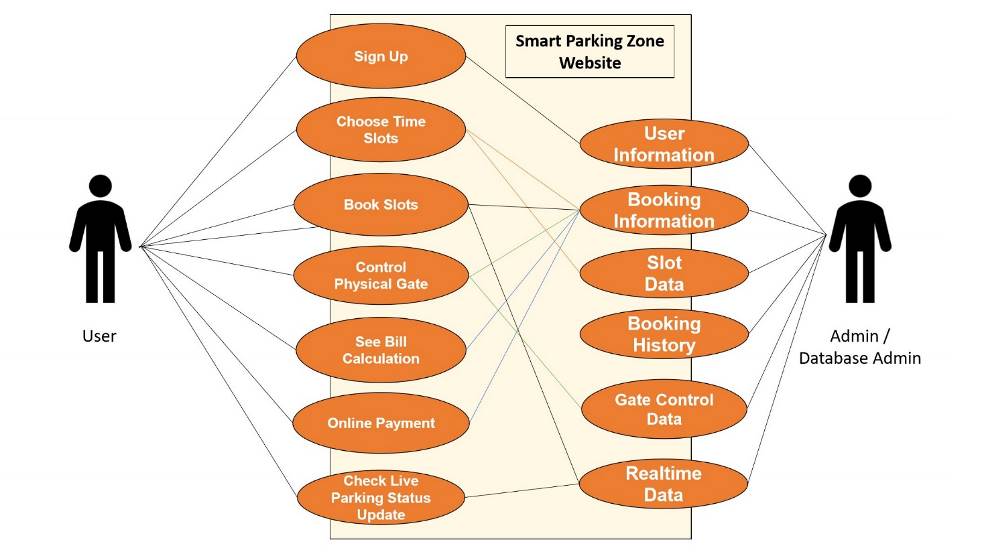
Figure 3.1.3. Use Case Diagram (UML Diagram).
In figure 3.1.3, it can be seen that the user can access many options, like- sign up, time slot choosing, book slots, control physical gate, bill calculation, pay online, and check like parking status. These all are connected with the backend database which can be accessed and updated by the admin only. The admin can access all this things by user information, booking information, slot data, booking history, gate data, and the real-time database. The features are interconnected and access are given according to the role in the website.
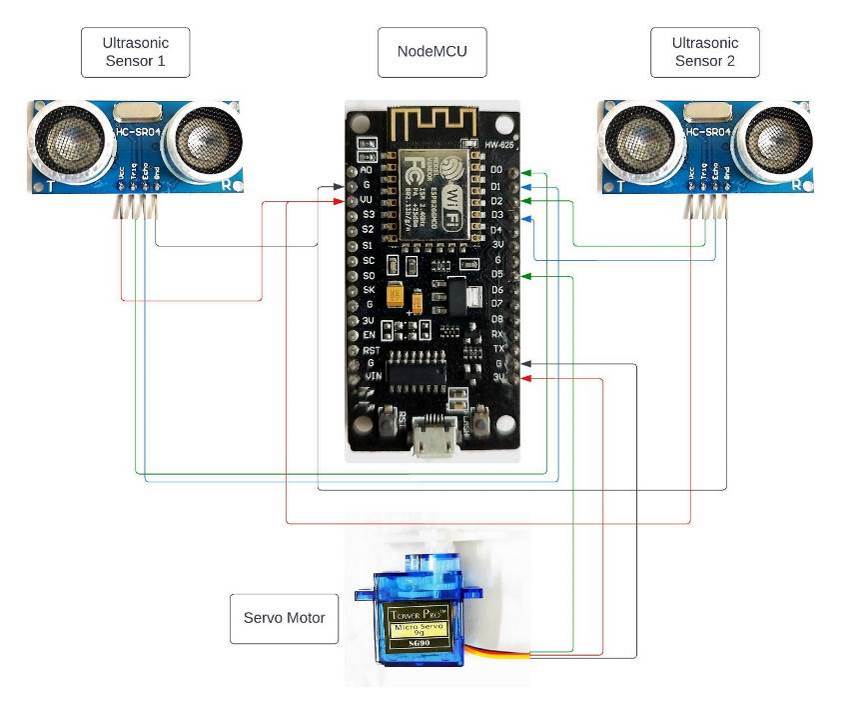
Figure 3.1.4. Hardware Connection Diagram.
In figure 3.1.4, the ultrasonic sensor 1’s trig and echo pin is connected to D0 and D1 pin of NodeMCU. The VCC pin and GND (ground) pin is connected to the VV pin and G (Ground) pin of the NodeMCU. The ultrasonic sensor two is also connected the NodeMCU by D2 for trig, D3 for echo, VCC, and GND pins. The pins D5, G (Ground) and 3V of the NodeMCU is connected serially to the servo motor’s control, VCC and ground pins.
B. Hardware and Software Components
Table I. List of Software/Hardware Tools
|
Type |
Tool |
Functions |
|
Software |
Arduino IDE |
Coding, compiling and code uploading to hardware. |
|
Software |
Visual Studio Code |
Writing the codes for website. |
|
Hardware |
NodeMCU V3 ESP8266 |
Calculation, wireless connection and data transfer. |
|
Hardware |
Ultrasonic Sensor HC-SR04 |
Object detection and distance measurement. |
|
Hardware |
Servo Motor SG90 |
Moving the shaft. |
|
Language |
C++ |
For the hardware coding. |
|
Language |
HTML |
Design the webpage. |
|
Language |
PHP |
For web development. |
|
Language |
CSS |
Presentation description of the web pages. |
|
Language |
JavaScript |
For the dynamic content in the website. |
|
Database |
Firebase Real Time Database |
For reading and sending data in hardware part and cloud data backup. |
|
Database |
MySQL |
For data saving, processing and local data backup. |
In figure 3.2.1, the intuitive Arduino IDE software platform is designed specifically for programming Arduino microcontrollers. It makes code authoring, compilation, and uploading to these flexible boards easy for both novice and seasoned programmers with its straightforward interface. The Arduino programming language is supported by the IDE, which makes it easier to create projects with sensors, actuators, and other electronic components. [11]
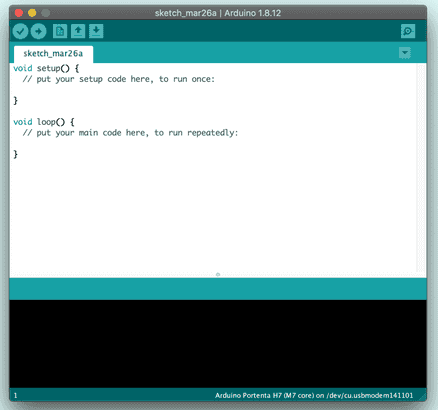
Figure 3.2.1. Arduino IDE.
In figure 3.2.2, the ESP8266 WiFi module powers the small, open-source NodeMCU v3 development board, which is ideal for Internet of Things applications. It uses a firmware that is based on Lua, which makes programming simple and prototyping quick. NodeMCU v3 is a popular choice for developers working on home automation, sensor networks, and various smart devices since it is inexpensive, works with the Arduino IDE, and includes built-in WiFi. Both newcomers and seasoned users exploring the Internet of Things can benefit from its intuitive design and connection features. [12]
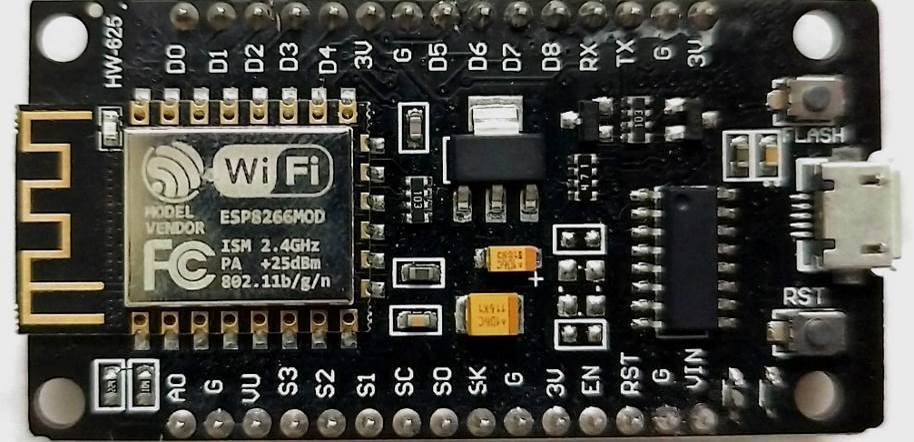
Figure 3.2.2. NodeMCU V3 ESP8266.
In figure 3.2.3, in electronics and robotics, the HC-SR04 ultrasonic sensor is a popular and reasonably priced distance measuring tool. VCC, Trig, Echo, and GND are the only four pins needed, making integration into projects simple. It measures the amount of time it takes for a signal to bounce back after encountering an obstruction in order to compute distances using ultrasonic waves. Because of its precision and simplicity, this sensor is widely used for applications such as obstacle avoidance and distance measurement. [13]
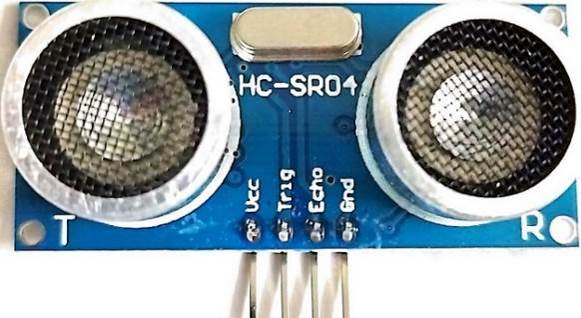
Figure 3.2.3. Ultrasonic Sensor HC-SR04.
In figure 3.2.4, SG90 servo motor is a frequently used, reasonably priced, and small part in robotics and electronics. Its ability to precisely regulate angular movement using a pulse-width modulation (PWM) signal, which permits rotation between 0 and 180 degrees, accounts for its flexibility. The SG90 is widely used in applications including robotic arm control, steering in remote-controlled vehicles, and accurate positioning duties because of its lightweight design and ease of use. [14]
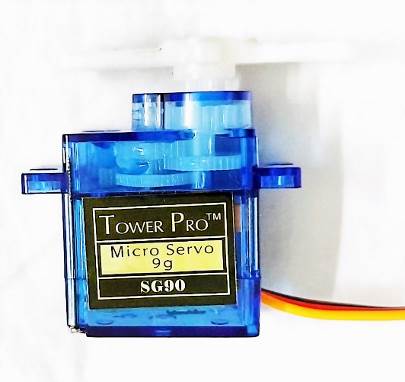
Figure 3.2.4. Servo Motor SG90.
In figure 3.2.5, C++ is a programming language offering a versatile and powerful toolkit for developers to build everything from high-performance games to complex software systems. It combines the raw efficiency of low-level programming with the flexibility of object-oriented principles, enabling coders to craft intricate and efficient solutions. [15]
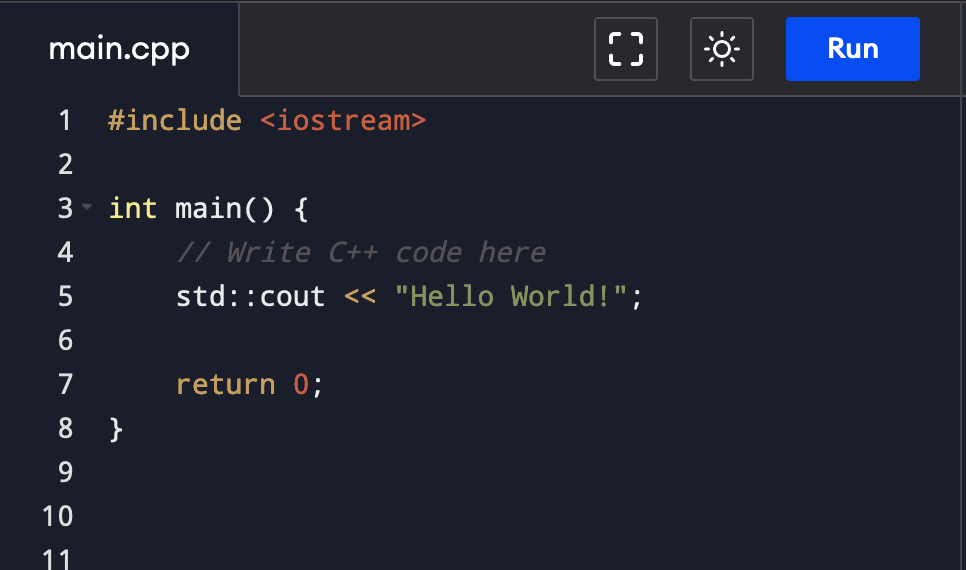 Figure 3.2.5. C++ Programing Language.
Figure 3.2.5. C++ Programing Language.
In figure 3.2.6, the standard markup language for documents intended for web browser display is called Hyper Text Markup Language, or HTML. It outlines the format and content of web material. Web browsers transform HTML documents into multimedia web pages after receiving them from a web server or local storage. Originally, HTML featured cues for a page's design and provided a semantic description of the page's structure. [16]

Figure 3.2.6. HTML (Hyper Text Markup Language).
In figure 3.2.7, PHP is a versatile scripting language designed primarily for web development. PHP interpreters, which can be implemented as modules, daemons, or Common Gateway Interface (CGI) executables, are typically used on web servers to process PHP code. An HTTP response would be entirely or partially of the output of the interpreted and run PHP code, which may be any kind of data, including produced HTML or binary picture data. There are several web content management systems, web template systems, and web frameworks available that can be used to coordinate or expedite the creation of that answer. [17]
 Figure 3.2.7. PHP.
Figure 3.2.7. PHP.
In figure 3.2.8, when writing a page in a markup language like HTML or XML (including XML dialects like SVG, MathML, or XHTML), style sheet language Cascading Style Sheets (CSS) is used to establish how the material is presented and styled. Along with HTML and JavaScript, CSS is a key component of the World Wide Web. [18]

Figure 3.2.8. Cascading Style Sheets (CSS).
In figure 3.2.9, in addition to HTML and CSS, JavaScript, also referred to as JS, is a computer language and a fundamental component of the Web. JavaScript is a client-side scripting language used by the majority of websites. The client code in web browsers is executed by a specialized JavaScript engine. Some servers and numerous applications also make use of these engines. [19]

Figure 3.2.9. JavaScript.
In figure 3.2.10, a cloud-hosted NoSQL database, Firebase Realtime Database is a component of Google's Firebase platform and is perfect for developing real-time, collaborative apps. It allows for smooth real-time synchronization across connected clients by storing data in JSON format. Because instantaneous data updates are crucial for applications like chat platforms and collaboration tools, this makes it a popular choice. It is an important tool for developers building dynamic and interactive apps because of its ease of use and seamless connection with other Firebase services. [20] [21]
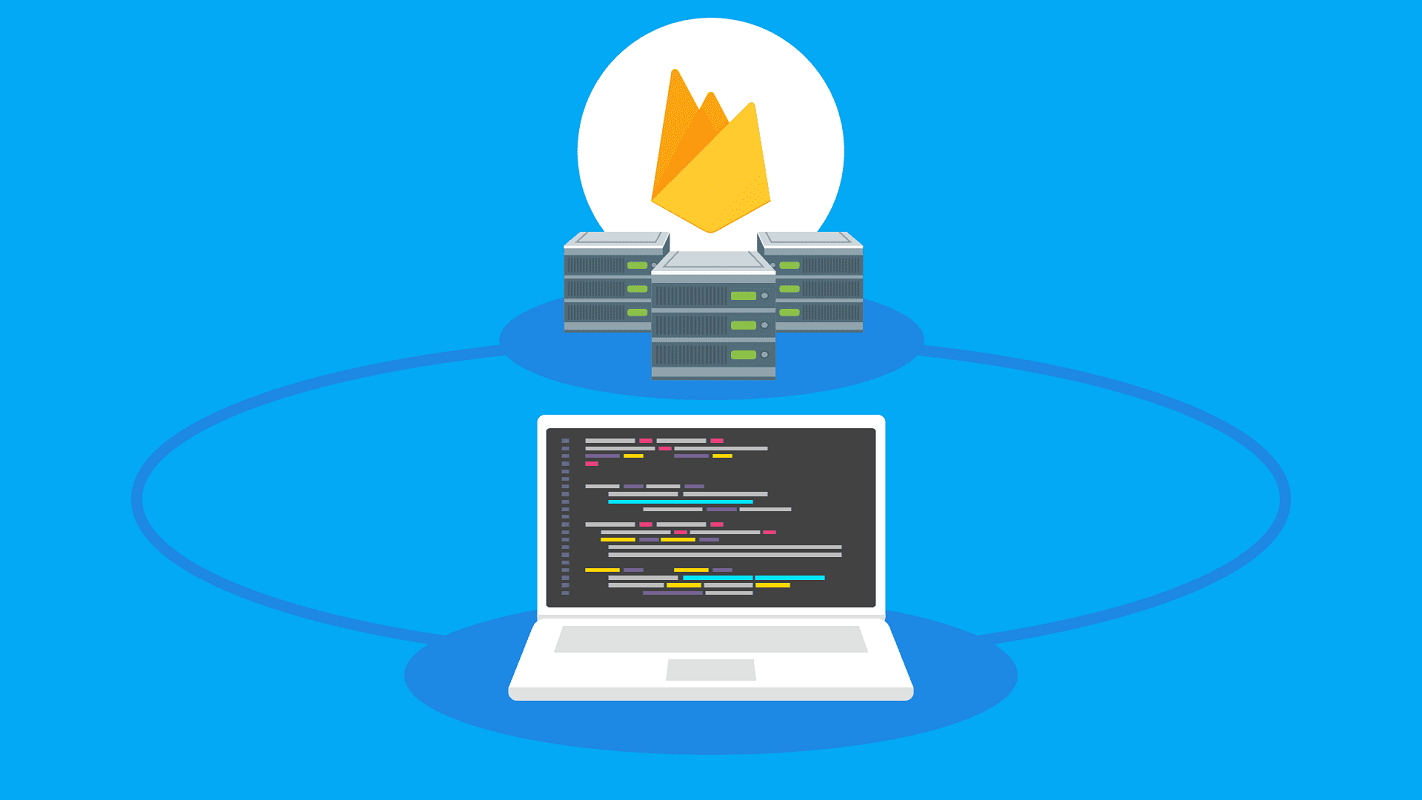 Figure 3.2.10. Firebase Realtime Database.
Figure 3.2.10. Firebase Realtime Database.
In figure 3.2.11, MySQL is an open-source relational database management system that efficiently stores, organizes, and retrieves large amounts of data. It uses tables to manage data and SQL (Structured Query Language) to handle queries, updates, and data relationships. It is a versatile tool for data management in various applications with great speed. [22]
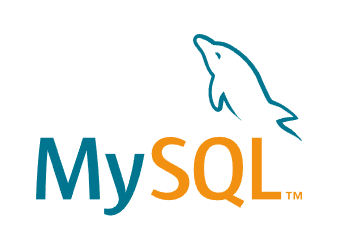
Figure 3.2.11. MySQL.
C. Hardware and Software Implementation
First, the code is written in Arduino IDE adding library function, declaration of variables, writing unique functions, main setup part and the loop. Then it is verified and burnt to the NodeMCU board after successful compilation. Thus, the hardware part is assembled and given power input from a power source by connecting through a USB cable type B. The assembled hardware got power, started initialization and working following the instructions of the written code. The system connected the hardware part to the Wi-Fi and to the Realtime database through stable internet connection. Finally, it could transfer data to the database successfully.
Secondly, the website frontend and backend were developed using various tools. HTML, PHP, CSS and JavaScript codes are mainly written for the website part. Then, MySQL database was integrated with the website. After several checks of all the features, the website was ready for the integration with the Firebase Real-time database system. This integration was done with the implementation of Node.js file. Also the Real-time database secrets were needed establish successful connection.
Finally, the hardware part could send and receive data from the Real-time database and the Real-time database could do the same the website part. Also, the data was stored in the MySQL local database for backup and other works. In the backend, the data from the website input and the data from hardware part reading were combined and calculated for giving accurate results and updates.
IV. EXPERIMENT, RESULT, ANALYSIS AND DISCUSSION
The system has established successful connection to the WIFI and the Firebase Realtime database through the stable internet connection. It can now write the sensor fetched data to the database instantly. Also, it can read the data from the Realtime Database and do actions in hardware part following the instructions. The website is transferring data correctly and working smoothly. The implemented real pictures and database changes is written below.
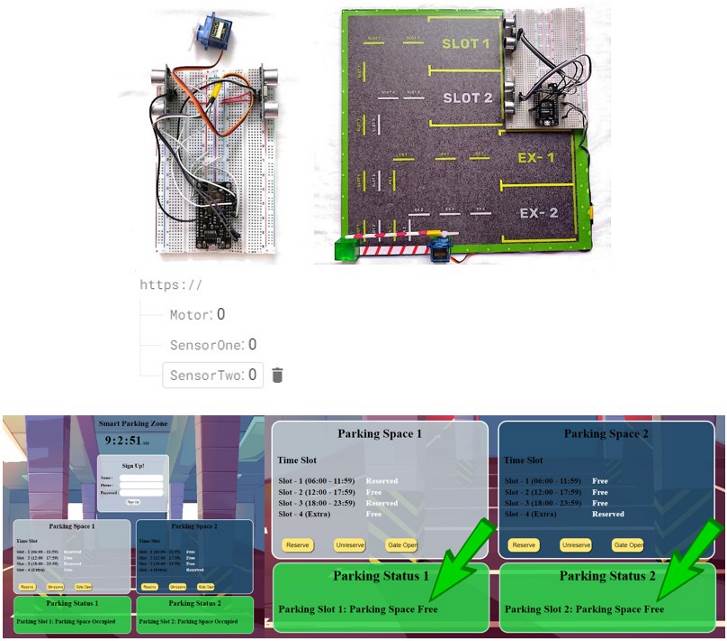
Figure 4.1. Live slot update status for empty slots.
In figure 4.1, when both slots (slot 1 and slot 2) are empty, the system will send new values to the database and it will be written there. The values of sensor 1 and sensor 2 in real time database are changed from 1 to 0 (Zero) because of the non-occupancy. The value will come from the hardware part.
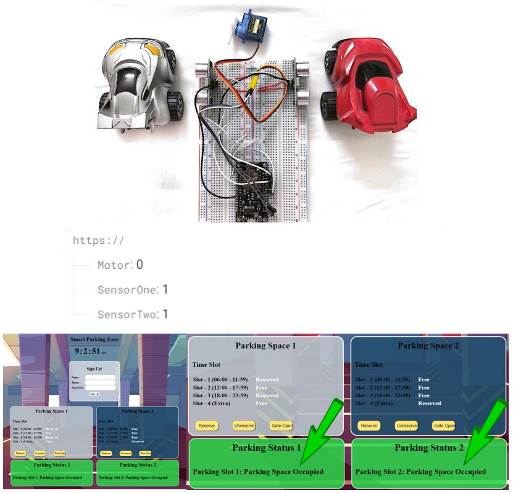
Figure 4.2. Live slot update status for occupied slots.
In figure 4.2, when both slots (slot 1 and slot 2) are occupied with cars, the system will send new values to the database and it will be updated there. The values of sensor 1 and sensor 2 in real time database are changed from zero to 1 because of the occupancy. The value will come from the hardware part.

Figure 4.3. Live slot update status for occupied slot 1.
In figure 4.3, when slot 1 is occupied with car, the system will send new value to the database and it will be written there. The values of sensor 1 in real time database are changed from 0 (zero) to 1 because of the occupancy. In this situation, the sensor 2 value will remain zero (0). The value will come from the hardware system. The extra slots are for emergency cases which can be also determined by installing more similar sensors.

Figure 4.4. Live slot update status for occupied slot 2.
In figure 4.4, when slot 2 is occupied with car, the system will send new value to the database and it will be written there. The values of sensor 2 in real time database are changed from 0 (zero) to 1 because of the occupancy. In this situation, the sensor 1 value will remain zero (0). The value will come from the hardware system.

Figure 4.5. Motor Shaft Orientation Change in Hardware Part for input 1.
In figure 4.5, if 1 (one) as value for ‘Motor’ is given input into the Realtime database, then the value will be changed and it will reflect the change of orientation of the shaft in the servo motor to 90 degree in the hardware part. It will mean ‘gate open’. This input will come from the website part.

Figure 4.6. Motor Shaft Orientation Change in Hardware Part for input 0.
In figure 4.6, if 0 (zero) as value for ‘Motor’ is given input into the Realtime database, then the value will be changed and it will reflect the change of orientation of the shaft in the servo motor to 0 degree in the hardware part. It will mean ‘gate close’. This input will come from the website part.

Figure 4.7. Customizable Parking Zone Digital Design
In figure 4.7, in the design, there will be primary slots, extra slots if needed, system area for machines and indication marks on the ground for better navigation.
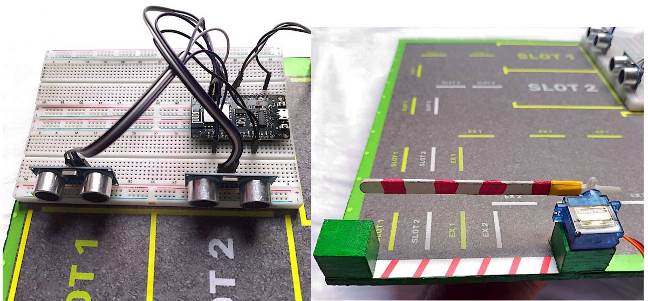
Figure 4.8. Hardware Components Installation.
In figure 4.8, the ultrasonic sensors were installed near the parking slots and they could read the occupancy status properly. The connected NodeMCU updates these data to the database instantly. The servo motor as a gate at the corner is working properly with rotation system from 0 to 90 degree.

Figure 4.9. Website Homepage.
In figure 4.9, the website homepage shows a continuous clock with live time update. There are definite time slots for booking the parking spaces. Sign up form on the upper side will receive and store the user data and credentials for verification in post actions. Occupied Parking slots cannot be booked. Only free parking slot with Realtime parking free occupancy allows to book a slot. Users can pre book anytime from everywhere. When they will come in front of the parking gate, they will click the gate open button, give correct credentials and the gate will be opened for the entry of the vehicle. It can be done only once. Users cannot go outside with their vehicle without giving full bill payment. After successful payment, the gate will be opened automatically for exit purpose. The green colored boxes show live occupancy updates of the parking spaces. Users can use the hotline number to call for queries and emergency help.

Figure 4.10. Website Unreserve Window
In figure 4.10, the unreserve window clearly shows the bill calculation of a user while final payment. It shows the reservation starting time, ending time, time minutes usage and total payable amount following per minute 10 taka cost. After successful payment, the reservation will be withdrawn. There is also a feature of booking money payment at the time of reservation for avoiding fake bookings.
Finally, the full project completes the designed system by taking online bookings and giving real life parking services without any type of human interaction and automated gate security system. It also maintains the database automatically for user and admin usage. The automatic payment system works very well and gives accurate bills. Moreover, the wireless technology of this project has made this project unique and independent.
This project shows some definite novelty, such as- the project is fully automated, it is portable, physical gate control from the website, data transfer between MySQL and Firebase database, no need of extra user identity except credential verification system in the website, and Real-time updates. These things altogether have built a great system combination.
V. IMPACTS OF THE PROJECT
A. Impact of this project on societal, health, safety, legal and cultural issues
It has great impact on vehicle safety as it gives an extra layer of protection while parking the vehicles. People gets benefited by saving their valuable time and they can implement their time in other works to be benefited in economical ways. There will be less traffic jam and other cause of road congestions will be also solved. Moreover, people will not have to think about their vehicle legal issues and fine also. Because law and order of the country can fine or give ticket to anyone for parking card in the roads illegally. So, it would be great solution for that also. Society will have a better environment as it will be more organized and it will teach the future generation to be a better human being. Also negative cultures will be removed gradually by being in a ruled and regulated life.
As customers can use the pay-as-you-go model, they will benefit in economical ways by not paying any extra money. It will give security for the vehicles. It will also decrease traffic jams which will save valuable time. The project design is compatible with installation both in personal and commercial places, which leads to earning revenue from unused or empty positions. This requires very little investment in infrastructure and maintenance. No salary cost for physical human interaction. It is a one-stop service for vehicle owners everywhere. This customizable project can also be provided as a service to the house owners. Because the landlords can provide their parking places for rent when their own vehicle is outside for work and also they can easily update their convenient timing slot. Customer data is saved for future business usage and analysis. Thus, the society can have a better future.
B. Impact of this Project on Environment and Sustainability
This project lessens nature spoiling product usage and saves the nature. It can be said that it is ecofriendly because it runs by electricity power only. There is no need of oil, gas or natural resources to burn. So, it will definitely keep the air and surroundings clean. This is definitely very much sustainable for the nature and environment. It will create a better eco system for the world and help the humans to develop themselves more precisely.
VI. PROJECT PLANNING AND BUDGET
 Figure 6.1. Gantt chart.
Figure 6.1. Gantt chart.
In figure 6.1, first two to three months were needed for idea finalization and study existing research papers. Then, another three months were for hardware part completion. The website part took around 4 months to complete with all features. At last, the collaboration of hardware part and website was established successfully. At the last month, final updates were implemented to the full project.
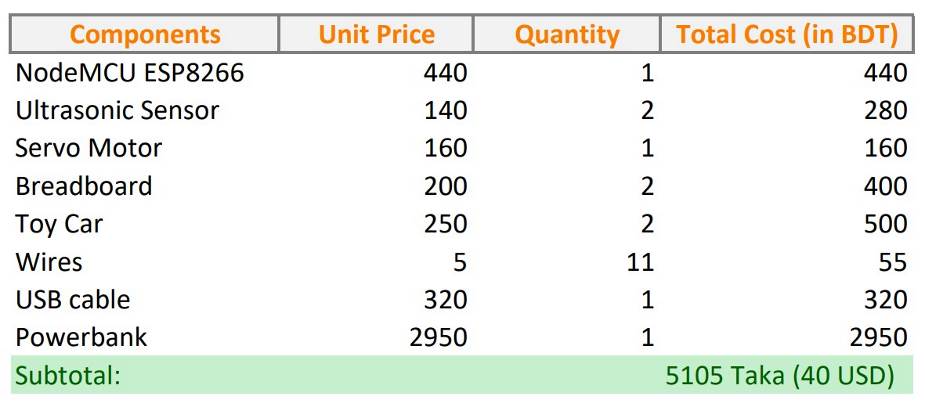
Figure 6.2. Budget table.
In figure 6.2, the cost of the hardware part was around 5105 Taka which is like 40 US Dollars. Though, many other tools were needed to do the project but the main things are stated in the budget table.
As computer software were used to develop the website, it has no monetary cost to add in this criteria.
VII. COMPLEX ENGINEERING PROBLEMS AND ACTIVITIES
A. Complex Engineering Problems (CEP)
Table II. A Sample Complex Engineering Problem Attributes
|
Attributes |
Addressing the complex engineering problems (P) in the project |
|
|
P1 |
Depth of knowledge required (K3-K8) |
The project requires knowledge of Electrical Circuits, Electronics (K3), Wireless Communication, Embedded System, Sensors and Instrumentations (K4), Designing and Simulation (K5), Engineering & IT (Circuit Design/Smartphone Application) Tools (K6), Involve Environmental Effects (K7), Scientific Research Papers (WK8). |
|
P2 |
Depth of analysis required |
Depth of analysis needed to select a specific solution from many alternatives. (Various microcontrollers. Various sensors) |
|
P3 |
Familiarity of issues |
NodeMCU Microcontroller. |
|
P4 |
Interdependence |
Project involves a number of interdependent sub-systems such as microcontrollers, sensors, wireless communication system, circuit designing tools, and web apps. |
Table II demonstrates a detailed complex engineering problem attribute.
B. sComplex Engineering Activities (CEA)
Table III. A Sample Complex Engineering Problem Activities
|
Attributes |
Addressing the complex engineering activities (A) in the project |
|
|
A1 |
Range of resources |
This project involves modern tools (simulation software), hardware components, etc. |
|
A2 |
Innovation |
Employs innovative skills of engineering by introducing technology in a different manner in the environment and IoT sector |
|
A3 |
Consequences to society / Environment |
Impact in our environment since it does not need any natural resources and no direct human interaction is needed. |
|
A4 |
Familiarity |
Needs to be familiar with the various sensors, microcontrollers, wireless communication system, circuit designing tools, web apps, programming, and computer languages. |
Table III demonstrates a detailed complex engineering problem activities.
Conclusion
A. Summary The “IoT Integrated Smart Parking Zone and Website with Stand-alone System and Wireless Technology” is a great project which can be helpful for all. It can be implemented all over the world. It is easy and convenient. Traffic problems, illegal parking and other parking issues can be resolved by this project implementation. People can directly use it and the owners of the parking spaces will be also benefited by receiving payments. It can make a vital difference in all our lives and nature also. Users can check slot availability, pre-book parking spaces, give gate open commands, make online payments, and also unreserve their slot. The hardware part is structured with NodeMCU, Ultrasonic Sensors, Servo Motor etc. It connects to the WI-FI and establishes successful connection with the Realtime database by internet connection. It can do both read and write data in the database. The website and hardware system is tested several times including exceptions handling and bug fixing and thus the project is successfully implemented. B. Limitations There is no major limitation in this project. Right now the database is free to use within some boundaries. But if the Realtime database starts billing us, then we have to make our own online real time database or have to pay bills to the existing one which will increase the cost of the project. Hardware part and website API code has to be updated regularly whenever there is a major change. Moreover, this will need stable internet connectivity all the time. Otherwise, the system will not work at all. And the power source is very important and it must be maintained regularly. Without proper voltage input, the system cannot run properly. C. Future Improvement Some extra features can make this project more advanced. Addition of computer vision will provide an extra layer of security and live data update accuracy. This can also enable emergency auto lock system. An AI-based messaging service BOT can be very helpful for instant chatting service for the customers by answering common queries and initiating pre-approved simple actions.
References
[1] A. Aditya, S. Anwarul, R. Tanwar and S. K. V. Koneru, \"An IoT assisted Intelligent Parking System (IPS) for Smart Cities,\" in International Conference on Machine Learning and Data Engineering, 2023. [2] R. Stopic, E. Dias, M. d. Kleijn and E. Koomen, \"Satellite parking: a new method for measuring parking occupancy,\" 2023. [3] H. Maduranga, K. Imendra, R. Prematilake, S. Samarasekara, R. Wanninayake and A. Perera, \"Development of an Internet of Things (IoT) Enable Smart Parking System for Sri Lanka,\" 2021. [4] A. Pomaji, S. Boinwad, S. Wankhede, P. Singh and B. Dhakulkar, \"Smart Parking Management System,\" International Journal of Computer Sciences and Engineering, vol. 7, no. 5, pp. 1204-1208, 2019. [5] S. Kanojiya, S. Wakade, H. Gachake, R. Nair and P. N. Fatima, \"IoT based Smart Parking System using NODE MCU ESP8266.,\" International Journal for Research in Applied Science and Engineering Technology, vol. 10, no. IV, pp. 2450-2456, 2022. [6] H. Tanti, P. Kasodariya, S. Patel and D. H. Rangrej, \"Smart Parking System based on IOT,\" International Journal of Engineering Research & Technology (IJERT), vol. 9, no. 5, pp. 73-77, 2020. [7] A. Ahad, M. H. Khan, W. Anwar, Y. Khan and M. Salman, \"ONLINE BASED PARKING SYSTEM,\" International Journal of Technical Innovation in Modern Engineering, vol. 5, 2019. [8] K. Singh, K. Bajaj, C. Verma, M. Bhardwaj and R. Mathpal, \"A Review Paper on Sensors and Comparative Study between Node MCU and Arduino UNO,\" International Journal of Advanced Research in Computer and Communication Engineering, vol. 11, no. 4, pp. 558-563, 2022. [9] L. Anjari and A. H. S. Budi, \"The Development of Smart Parking System based on NodeMCU 1.0 using the Internet of Things,\" in IOP Conference Series: Materials Science and Engineering, 2018. [10] J. Charles, A. Dhage, G. Bodele, T. Bargat and D. J. Gawai, \"Portable Smart Parking System Using Firebase,\" International Journal for Research in Applied Science & Engineering Technology (IJRASET), vol. 10, no. II, 2022. [11] Arduino, \"Overview of the Arduino IDE 1,\" [Online]. Available: https://docs.arduino.cc/software/ide-v1/tutorials/Environment. [Accessed 20 November 2023]. [12] sho8c1rkut, \"Getting Started With ESP8266(LiLon NodeMCU V3) Complete Guide for IoT Startup With Example(as Server),\" [Online]. Available: https://www.instructables.com/Getting-Started-With-ESP8266LiLon-NodeMCU-V3Flashi/. [Accessed 20 November 2023]. [13] Wikipedia, \"Ultrasonic transducer,\" [Online]. Available: https://en.wikipedia.org/wiki/Ultrasonic_transducer. [Accessed 20 November 2023]. [14] Components101, \"Servo Motor SG-90,\" [Online]. Available: https://components101.com/motors/servo-motor-basics-pinout-datasheet. [Accessed 20 November 2023]. [15] Programiz, \"Learn C++ Programming,\" [Online]. Available: https://www.programiz.com/cpp-programming. [Accessed 22 May 2024]. [16] W3schools, \"HTML Tutorial,\" [Online]. Available: https://w3schools.com/html/. [Accessed 22 May 2024]. [17] php, \"Documentation,\" [Online]. Available: https://www.php.net/docs.php. [Accessed 22 May 2024]. [18] WIKIPEDIA, \"CSS,\" [Online]. Available: https://en.wikipedia.org/wiki/CSS. [Accessed 22 May 2024]. [19] JavaScript.com, \"Learn JavaScript Online,\" [Online]. Available: https://www.javascript.com/. [Accessed 22 May 2024]. [20] Firebase, \"Firebase Realtime Database,\" [Online]. Available: https://firebase.google.com/docs/database. [Accessed 20 November 2023]. [21] Firebase, \"Firebase Realtime Database,\" [Online]. Available: https://firebase.google.com/products/realtime-database. [Accessed 20 November 2023]. [22] MySQL, \"MySQL,\" [Online]. Available: https://www.mysql.com/. [Accessed 22 May 2024]. [23] Y. Pauliukevich, \"Underground car parking with vacant places markup Free Vector,\" [Online]. Available: https://www.vecteezy.com/vector-art/23870200-underground-car-parking-with-vacant-places-markup. [Accessed 22 May 2024].
Copyright
Copyright © 2024 Md. Tanjil Islam Khan, Md. Shahriar Hussain. This is an open access article distributed under the Creative Commons Attribution License, which permits unrestricted use, distribution, and reproduction in any medium, provided the original work is properly cited.

Download Paper
Paper Id : IJRASET64124
Publish Date : 2024-08-30
ISSN : 2321-9653
Publisher Name : IJRASET
DOI Link : Click Here
 Submit Paper Online
Submit Paper Online

